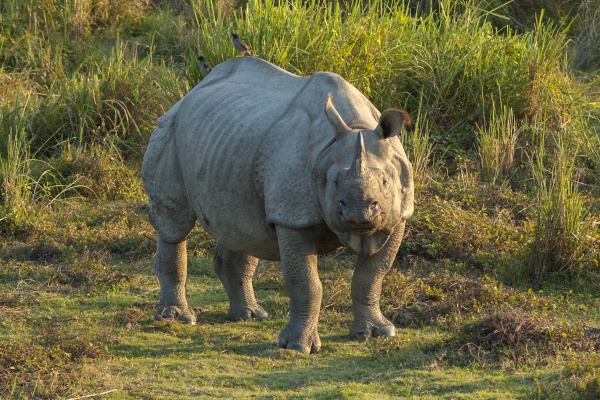Facts About Great Indian One-horned Rhinoceros
The Indian rhinoceros, also known as the greater one-horned rhinoceros, is a fascinating species native to the Indian subcontinent. Unfortunately, it is currently listed as Vulnerable on the IUCN Red List, primarily due to habitat fragmentation and degradation. The rhino's natural habitat, the lush Terai-Duar savannas and grasslands, is dwindling due to human activities. As of 2008, there were only around 2,575 mature individuals remaining in the wild.
Scientifically named *Rhinoceros unicornis*, the Indian rhinoceros is a monotypic species, meaning it is the sole representative of its genus. Over the years, it has been referred to by various names, but they all trace back to *R. unicornis*. The name “Rhinoceros” derives from ancient Greek words meaning 'nose horn,' and "unicornis" emphasizes its distinctive one-horned feature.
From an evolutionary standpoint, rhinoceroses diverged from other hoofed mammals (perissodactyls) during the Early Eocene. The family Rhinocerotidae, which includes the Indian rhino, first appeared in the Late Eocene. Fossils of *R. unicornis* date back to the Middle Pleistocene. Notably, the Indian and Javan rhinoceroses are the only members of the genus *Rhinoceros*, and they separated from other rhino species approximately 11.7 million years ago.
The Indian rhinoceros is distinguished by its thick, grey-brown skin, a single horn, and wart-like protuberances on its legs. It is the second-largest rhino species, surpassed only by the Asian elephant in size. These rhinos are primarily grazers, feeding on grasses, leaves, fruits, and even aquatic plants.
Historically, the Indian rhino roamed a much larger territory, but its range is now confined to a few regions in southern Nepal, northern West Bengal, and the Brahmaputra Valley. Due to concerted conservation efforts in India and Nepal, their numbers have increased in protected areas such as Kaziranga National Park and Chitwan National Park.
However, the Indian rhinoceros faces several threats, including historical sport hunting, habitat loss, and poaching for its horn, which is highly valued in traditional Chinese medicine. To counter these threats, conservation measures such as listing the species in CITES Appendix I and initiating translocation programs have been implemented.
In captivity, breeding programs have achieved a degree of success, with notable births resulting from artificial insemination. These captive populations are vital for maintaining genetic diversity and safeguarding the species from extinction.

 Afghanistan
Afghanistan